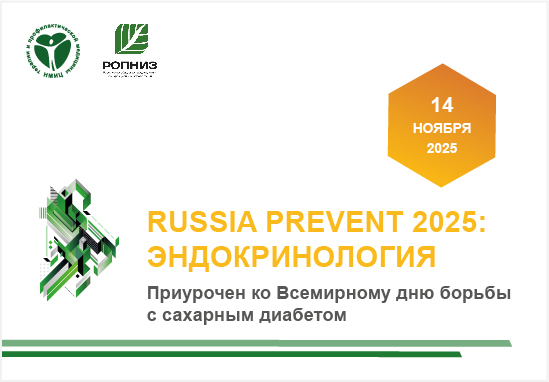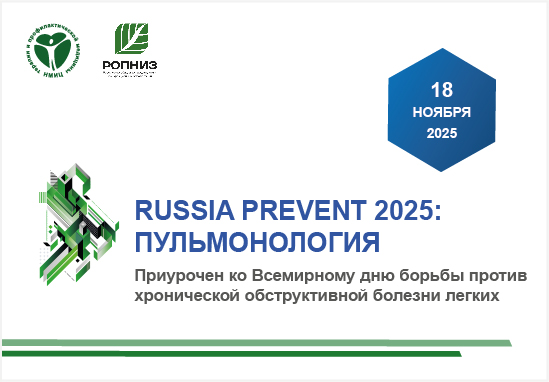DEATH CAUSES AND THEIR PREDICTION IN PATIENTS WITH THE ST SEGMENT ELEVATION ACUTE CORONARY SYNDROME AND PRE-HOSPITAL THROMBOLYSIS
https://doi.org/10.15829/1728-8800-2013-2-52-57
Abstract
Aim. To assess effectiveness and safety of pre-hospital medical treatment in patients with acute coronary syndrome and ST segment elevation (ST-ACS) who are undergoing thrombolytic therapy (TLT); to identify TLT complications and the methods for their prediction.
Material and methods. In total, the pre-hospital TLT effectiveness was assessed in 237 patients. The comparison group included 274 patients who did not undergo TLT, due to various reasons. The causes of death by Day 7–10 were analysed.
Results. The leading cause of death was cardiogenic shock. In addition, in the main group, indirect myocardial rupture was a cause of death more often than in the comparison group (28% vs. 5,3%). Indirect myocardial rupture was associated with haemorrhagic complications of pre-hospital TLT. The proposed method for predicting TLT complications is based on the TIMI scale: 1–4 points suggest TLT safety; 4–5 points correspond to a higher risk of external myocardial rupture (11,6%), which implies the need to perform TLT under control of blood coagulation parameters; and ≥6 points denote the need to avoid pre-hospital TLT and use a mechanic reperfusion strategy.
Conclusion. Among ST-ACS patients, mortality levels were 20,9%, which was 2,4 times higher than in the comparison group. In the main group, the morphological data obtained at autopsy demonstrated hemorrhagic myocardial transformation, which was associated with the high risk of indirect myocardial rupture (28,1%). In patients with pre-existing arterial hypertension and with the time from the ST-ACS onset of 2–3 hours, the risk of indirect myocardial rupture should be predicted, based on the TIMI scale. This will facilitate more effective assessment of the systemic TLT complication risk and selection of the optimal reperfusion strategy.
About the Authors
S. N. MorozovRussian Federation
A. I. Fedorov
Russian Federation
K. S. Loskutova
Russian Federation
A. L. Vertkin
Russian Federation
References
1. Ruda MY. What you need to know doctor about thrombolysis in myocardial infarction. Heart 2002; 1: 9–12. Russian (Руда М. Я. Что нужно знать практикующему врачу о тромболитической терапии при инфаркте миокарда. Сердце 2002; 1: 9–12).
2. Goloborodko VI. Thrombolytic therapy of myocardial infarction — a modern approach to the problem. Ukrainian J Cardiology 2006; 1: 5–21. Russian (Голобородько Б. И. Тромболитическая терапия инфаркта миокарда — современный взгляд на проблему. Украин кардиолог ж 2006; 1: 5–21).
3. Goldstein P, Wiel E. Management of prehospital thrombolytic therapy in ST-segment elevation acute coronary syndrome (<12 hours). Minerva Anestesiol 2005; 6: 297–302.
4. Fresco C, Fioretti PM. Early prehospital thrombolysis in acute myocardial infarct: a moral obligation? Ital J Heart 2003; 2: 102–11.
5. Al-Anee K, Al-Ani A, Henriksen M. Mortality after acute coronary syndrome. Tidsskr Nor Laegeforen 2007; 12: 1628–30.
6. Van Domburg RT, Kappetein AP, Ad JJ. The clinical outcome after coronary bypass surgery: a 30-year follow-app study. Eur Heart J 2009; 4: 453–8.
7. Rodriges AP, Lara Santes JJ. Pre-hospital fibrinolysis in the patient with acute coronary syndrome with ST-segment elevation: history and recommendations. Emergencias 2009; 21: 441–50.
8. Erlikh AD, Grasianskyi NA on behalf of the case RECORD. Registry of acute coronary syndrome RECORD. Patients and treatment prior to discharge from hospital. Kardiologiia. 2009; 7–8: 4–12. Russian (Эрлих А. Д., Грацианский Н. А. от имени участников регистра РЕКОРД. Регистр острого коронарного синдрома РЕКОРД. Характеристика больных и лечение до выписки из стационара. Кардиология 2009; 7–8: 4–12).
9. Pron PG, Angelino P, Varbella F, et al. Heart rupture in acute myocardial infarction: multicenter observational study of the coronary unit of Piedmont. Ital Mean J 2002; 3 (Suppl.): 215–20.
10. Sabatine MS, Cannon CP, Gibson CM, et al. Addition of clopidogrel to aspirin and fibrinolytic therapy for myocardial infarction with ST-segment elevation. N Engl J Med 2005; 352: 1179–81.
11. Figueras J, Barrabes JA, Serra V, et al. Hospital Outcome of Moderate to Severe Pericardial Effusion Complicating ST-Elevation Acute Myocardial Infarction. Circulation 2010; 122: 1902–9.
12. Weissman G, Kwon CC, Shaw RK, et al. Free-Wall Rupture of the Myocardium Following Infarction: A Changing Clinical Portrait in the Reperfusion Era: A Case Report. Angiology 2006; 5: 636–42.
13. Russian guidelines for the diagnosis and treatment of patients with acute myocardial infarction with elevation ST. М 2008. Russian (Российские рекомендации по диагностике и лечению больных острым инфарктом миокарда с подъемом сегмента ST. М 2008).
14. Vertkin AL, Moshina VA. Treatment of acute coronary syndrome to prehospital setting. Rus med magazine 2006; 9: 14–8. Russian (Верткин А. Л., Мошина В. А. Лечение острого ко ронарного синдрома на догоспитальном этапе. Рус мед ж 2006; 9: 14–8).
15. Belyalov FI. Prehospital treatment of acute coronary syndrome. Irkutsk 2010. Russian (Белялов Ф. И. Догоспитальное лечение острого коронарного синдрома. Иркутск 2010).
16. Zeltin-Abramov EM. Thrombolytic therapy and myocardial rupture in acute period myocardial infarction: diss … M. D. Moscow State University of Medicine and Dentistry 2011. Russian (Зелтынь-Абрамов
17. Е. М. Тромболитическая терапия и разрывы сердца в остром периоде инфаркта миокарда. Дисс докт мед наук. МГМСУ 2011).
18. Vertkin AL, Talibov OB. Acute coronary syndrome. Emergency therapy 2004; 5–6: 46–58. Russian (Верткин А. Л., Талибов О. Б. Острый коронарный синдром. Неотложная терапия 2004; 5–6: 46–58).
Review
For citations:
Morozov S.N., Fedorov A.I., Loskutova K.S., Vertkin A.L. DEATH CAUSES AND THEIR PREDICTION IN PATIENTS WITH THE ST SEGMENT ELEVATION ACUTE CORONARY SYNDROME AND PRE-HOSPITAL THROMBOLYSIS. Cardiovascular Therapy and Prevention. 2013;12(2):52-57. (In Russ.) https://doi.org/10.15829/1728-8800-2013-2-52-57
























































